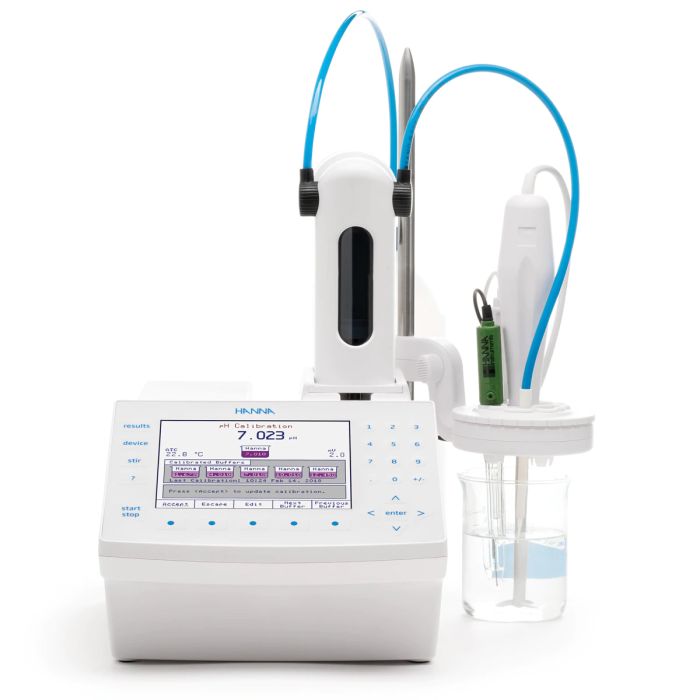Potentiometric Titrator, Automatic Titration system, Auto Titrators Manufacturer, Exporter in Navi Mumbai, India

High accuracy, versatility, and repeatability are features of Hanna automatic titrators, which enable users to quickly and accurately analyse data while executing a wide range of potentiometric titrations. In addition to direct measurements via monitoring the sample's pH/mV and temperature, these titrators may carry out preset endpoint or equivalency point titrations. In addition to being directly printed from the titrator, reports and procedures can also be saved to a USB storage device and transmitted to a PC via a USB interface. For even more ease, an external keyboard can be connected.
Principal of Titration
Titration is a method of finding the concentration of an unknown solution by using a solution of a known concentration. In analytical chemistry, titration is used to measure the concentration or quantity of an analyte, or chemical. Analyte concentration in solution is quantitatively measured using titration, which involves the reaction of the analyte with a reagent. One reagent that is titrant, is gradually added to a solution containing the species being analysed in a titration. The titrant and analyte react chemically as they are introduced. The point at which the reaction is complete and an equivalent quantity of titrant and analyte are present (a stoichiometric equivalent) is called the equivalence point. This can be determined by a chemical indicator that is also present in the solution, or by a measurable physical change in the solution, like pH, electrode potential, conductivity, or light absorption (color). A sudden change in these physical properties indicates endpoint of the titration.
Automatic Titration
Automated titration is carried out using equipment that automatically administers the titrant, pauses at the endpoint, and determines the analyte's concentration. Because the endpoint is determined by an electrochemical measurement rather than a subjective color indicator, automatic titrators yield the most accurate and consistent results.
Types of titrations that can be performed by potentiometric automatic titrators are:
- Acid-base titrations
- Oxidation reduction titrations
- Complexometric titrations
- Precipitation titrations
- Non-aqueous titrations
- Argentometric titrations
- pH, ORP, and Ion selective measurements
Automatic titrations have several advantages over other approaches and are extremely precise. These titrations are least time consuming and comprise of a simple instrumentation. The components of an automatic titrator include a burette, a beaker, a stirring mechanism, a sensor, and a volumetric pipette for measuring the sample volume or an autosampler.